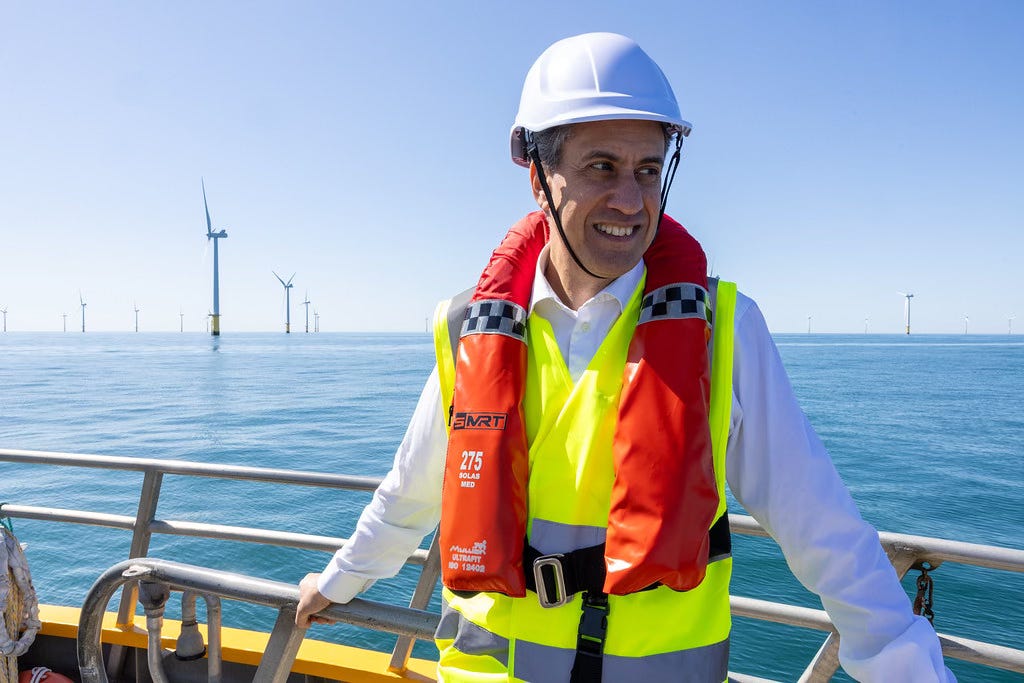
Queen Mary I of England famously said in 1558, “When I am dead and opened, you shall find Calais engraved on my heart.” It’s odds on that Ed Miliband is commenting along similar lines to his family and friends at the moment although it will be “£300” that they will find engraved there.
How can we be so sure of this? Well, the Prime Minister’s communications team have recently been briefing the press along the lines that the Prime Minister too, like everyone else, is curious to see how Miliband’s promise of taking £300 a year off consumers’ energy bills can be met. The short answer – and Miliband is as aware of this as anyone else – is that it can’t be. And it definitely can’t be after Miliband’s department recently published the maximum prices they are prepared to pay for power from renewable sources in the next bidding round (called AR7). The prices are astounding – the highest prices offered in the past decade despite the major advances in renewable technology.
Maybe Miliband is cleverer than all of us. After all, a high maximum strike price will, at the very least, get a lot of people involved in the auction and maybe all this competition will see the maximum price that is actually paid being well below the department’s suggestion. Alas not – because this isn’t the reason that Miliband has issued such high strike prices. He has to make sure that AR7 is a success otherwise he won’t meet his 2030 clean power target. In fact, because of this target, virtually every company that bids will get something from the auction which rather undermines the purpose of the auction in the first place. As a result, the £300 that Miliband has touted so often is likely to represent a price rise rather than a price cut.
The rise in bills is just part of the problem that Miliband, and by extension, Sir Keir Starmer, faces. By offering such a high strike price, Miliband and his team are undermining the idea that renewables are cheaper than gas which is both a bad thing in itself and an argument that they have relied on from the start.
Miliband has repeatedly said that the reason for high energy bills in the UK is that the price of power is driven by the gas price. And he’s not entirely wrong – although he’d be as well to go after how UK energy is charged and the structure of consumers’ bills – but he will be wrong in the future when projects from AR7 come on stream. In the past year, the average price of power, driven by gas pricing, has been £72 per MegaWatt/hour (MWh); under the new scheme, the maximum price for offshore wind will be £113 per MWh while the Climate Change forecast for offshore wind is £38 per MWh. Those are, self-evidently, massive discrepancies which the Poor Bloody Consumer is going to have to pay.
So something is going to have to give. Miliband may have to revisit his pricing at the risk of the auction failing, which has happened before under the Tories when the maximum strike price was too low. The Prime Minister may have to intervene which would certainly put his relationship with Miliband under severe strain and may end up with a major Labour big beast seething on the backbenches. Or, as seems most likely, neither man acts and Labour will have to change how they sell Net Zero to the voters by telling them that, despite the pain, lower emissions are a public good in themselves and worth paying for given what we’re seeing around the world.
On a cool and blustery July day in London, it doesn’t feel like a very good argument but, as things stand, it’s likely the only argument they’re going to have. As the denizens of Calais might have said to Queen Mary’s men as they left French shores, bonne chance, mes braves. You’re going to need it.
